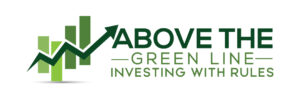
By ATGL
Updated February 23, 2025
Understanding the complexities of bond investments can often feel like navigating a labyrinth. Among the many metrics used by investors, Yield to Worst (YTW) stands out as a crucial gauge of a bond’s potential performance.
YTW signifies the lowest yield an investor could receive if a bond is called or matures early. This measure is vital for assessing risk and ensuring that investors make informed decisions under varying market conditions.
In this article, we will explore the definition of YTW, its formula, and its significance in comparing various bond types. We will also delve into the calculation methods, the influence of interest rates, and practical applications in investment strategies.
What is Yield to Worst (YTW) and Why Is It Important?
Yield to Worst (YTW) is the lowest yield an investor might receive from a bond, factoring in all possible call dates and maturity options. It offers a conservative estimate of potential returns and is crucial for evaluating downside risks in bond investments. YTW is especially important for bonds that may be called, prepaid, or subject to sinking funds, as it reflects worst-case cash flow scenarios.
Understanding YTW allows investors to compare it with other yield metrics, like Yield to Maturity (YTM) and Yield to Call (YTC). This comparison helps assess potential yield outcomes and risks. Portfolio managers use YTW to enhance risk management strategies, ensuring that bond allocations match investors’ risk tolerances and financial objectives.
Here are some reasons why YTW is important:
– Downside Risk Assessment: Identifies potential yield declines.
– Informed Decision-Making: Helps in choosing suitable bonds.
– Risk Management: Aids in aligning investments with risk appetite.
By focusing on YTW, investors and portfolio managers can safeguard financial stability while optimizing potential returns.
Comparison of Yield to Worst with Other Bond Yield Types
Yield to Worst (YTW) is a critical metric for bond investors, offering insight into the lowest possible yield from a bond under several scenarios, such as early redemption. This conservative measure contrasts with other yield types, providing a comprehensive view of potential returns and risks involved with bond investments.
Yield to Worst vs Yield to Maturity (YTM)
Yield to Worst (YTW) and Yield to Maturity (YTM) are essential metrics for bond investors but serve different purposes. YTW represents the lowest potential yield considering all possible call dates and maturity scenarios. It gives a worst-case scenario for callable bonds, where early redemption can limit returns.
Conversely, YTM assumes the bond is held until maturity without factoring in call options. It estimates the total return an investor can expect, encompassing interest payments and capital gains or losses. While both metrics are valuable, YTW is particularly conservative, focusing on potential downside risks.
|
Feature |
Yield to Worst (YTW) |
Yield to Maturity (YTM) |
|---|---|---|
|
Purpose |
Lowest yield considering early redemption |
Expected total return at maturity |
|
Suitability |
Ideal for callable bonds |
Suitable for bonds held to maturity |
|
Risk Approach |
Conservative, factors in call options |
Optimistic, ignores early redemption |
|
Focus |
Worst-case scenario |
Overall expected return |
YTW is beneficial when yields stray from par value with shorter maturities, whereas YTM is straightforward and does not contemplate early redemptions. Understanding both helps investors select bonds that align with their financial goals and risk tolerance.
Yield to Worst vs Yield to Call (YTC)
Yield to Worst (YTW) and Yield to Call (YTC) provide insights into bond returns, particularly for callable bonds. YTW offers the minimum yield accounting for all possible call dates and the bond’s maturity, while YTC focuses on returns if the bond is redeemed at the earliest call date.
YTW is a more comprehensive metric, as it encompasses both YTC and YTM scenarios, offering a single assessment of potential returns by determining the lowest of these yields. It aids investors in comparing callable bonds by considering penalties and risks associated with early redemption.
In contrast, YTC zeroes in on the specific yield received if the bond issuer calls the bond early. However, it may not represent the full scope of risks and returns compared to YTW. For investors assessing the overall downside risk in callable bonds, YTW gives a more extensive viewpoint.
Yield to Worst vs Nominal Yield
Yield to Worst (YTW) and Nominal Yield offer differing perspectives on bond yield. The Nominal Yield, or coupon rate, is a fixed percentage paid to bondholders based on the bond’s face value. It does not account for market changes or early redemption risks.
On the other hand, YTW accounts for the lowest potential yield under multiple scenarios, including early call options. This makes YTW crucial for a realistic evaluation of bond investments, providing a conservative estimate of potential returns and ongoing cash flows.
While the Nominal Yield is constant over a bond’s lifespan, YTW can fluctuate, influenced by changes in market conditions and the bond issuer’s likelihood of calling the bond early. Hence, YTW offers a more dynamic and risk-adjusted picture crucial for investors concerned with fluctuations in bond prices and potential returns. By assessing the YTW, investors gain a clearer understanding of risks, aiding in more informed decision-making regarding bond selections.
In conclusion, YTW serves as an essential tool for investors to evaluate potential yields under various challenging conditions, ensuring a robust approach to managing risks and optimizing returns in their bond portfolios.
How to Calculate Yield to Worst
Yield to Worst (YTW) is a crucial concept for bond investors. It gives them the worst-case scenario in terms of returns. To calculate it, you need to gather specific details such as the bond’s coupon rate, par value, maturity date, and any call provisions. These details help you examine the bond’s performance under various scenarios.
Impact of Interest Rates on YTW Calculations
When considering Yield to Worst (YTW), market interest rates play a key role in determining bond investment outcomes. Here’s how:
- Rising Interest Rates:
– Bond prices generally decrease.
– Decreased likelihood of early bond calls.
– Potential increase in YTW for bondholders. - Falling Interest Rates:
– Bond prices generally increase.
– Increased likelihood of early bond calls.
– Potential decrease in YTW.
Issuers are more inclined to call bonds if interest rates drop, as refinancing at lower rates helps manage debt costs. This impacts YTW calculations, as investors often face lower potential returns due to early bond redemption. Understanding these dynamics is crucial for assessing a bond’s return potential and associated risks.
Applications of Yield to Worst in Investment Strategies
Yield to Worst (YTW) is a vital risk assessment tool in the world of bond investments. It helps investors assess the worst-case yield scenario, considering call and prepayment possibilities. This assessment is especially important for short-term bonds, as early redemptions and prepayments can significantly impact returns.
Investors use YTW calculations to align bonds with their risk tolerance and investment objectives. By comparing potential returns across different bonds, YTW facilitates informed decision-making. It helps investors optimize their portfolios, enhancing their investment strategies.
Here’s how YTW can be applied:
– Portfolio Optimization: Select bonds that match your risk profile.
– Risk Management: Identify potential downside risks in bonds.
– Informed Decisions: Compare potential returns for portfolio inclusion.
Investment banks also rely on YTW analysis. They use it to structure bond offerings that cater to various investor risk preferences. Moreover, it helps in evaluating the fair market value of bond portfolios, essential for financial reporting and regulatory compliance.
In summary, YTW is an essential tool for both investors and financial institutions. It highlights risks and returns, supporting strategic investment decisions.
Ensure Smart Investments With Above the Green Line
Yield to Worst (YTW) is a key tool in ensuring smart investments. It measures the lowest yield an investor can expect from a bond, especially if it’s redeemed early or has call options. By comparing YTW across different bonds, investors can choose stable and predictable income streams for their portfolios. This comparison helps in identifying bonds that potentially offer a steadier return, even with market fluctuations.
When selecting bonds, investors should consider YTW along with other factors like credit quality, duration, and the financial health of the bond issuer. This comprehensive approach ensures well-rounded investment decisions. YTW is also useful for gauging credit risk, playing a vital role in hedging strategies when evaluating bond portfolios.
Understanding factors that influence YTW aids investors in accounting for potential risks. It aligns investments with financial goals, leading to smarter investment decisions.
Consider the following checklist when evaluating bonds:
– Compare YTW of different bonds
– Assess credit quality and duration
– Review issuer’s financial health
– Align with financial goals
This strategy ensures investors can navigate potential risks while achieving desired investment outcomes. Join Above the Green Line and learn more about being a smart investor.






